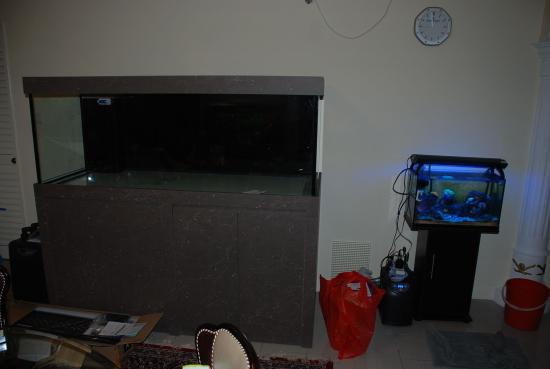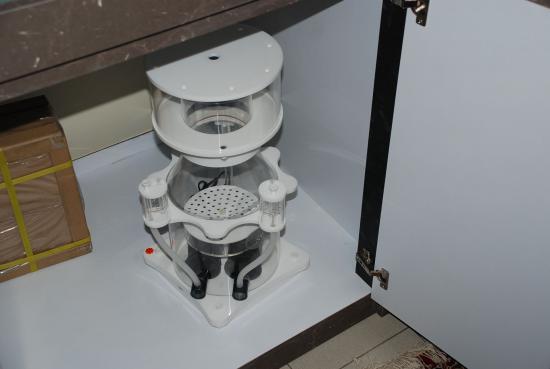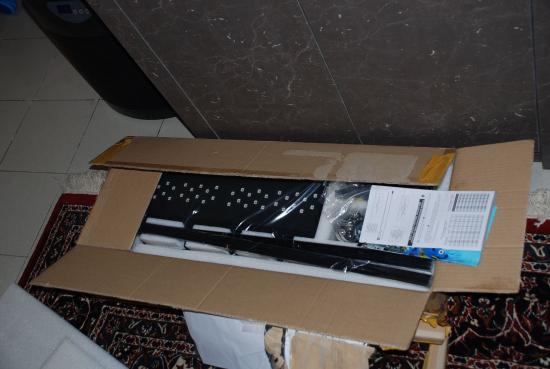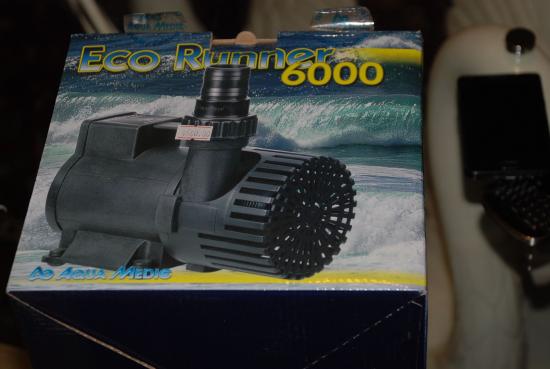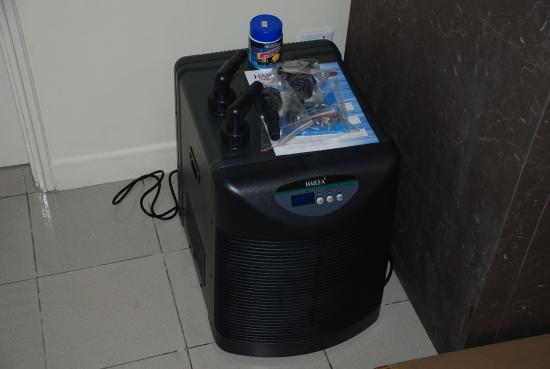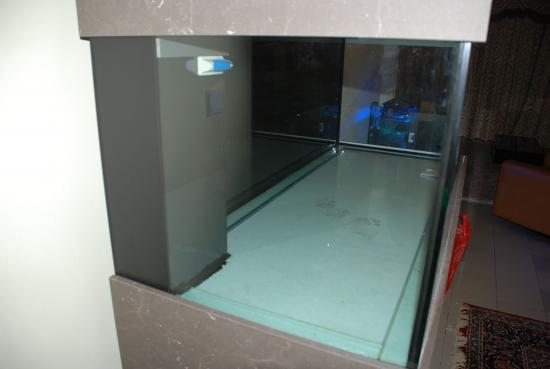
Oprime
SRC Member-
Posts
180 -
Joined
-
Last visited
-
Days Won
5
Content Type
Profiles
Forums
Gallery
Everything posted by Oprime
-
Yup! Will decomm the small one once the 6 footer is ready to receive its occupants:-)
-
Thanks Guys:-)
-
Okay guys - here it is as promised. Tank done by Aquarium Artist (Vincent) - 6 feet x 2.5 feet x 27 inches - Front and Side panels low iron glass. All panels 12 mm Skimmer: Skimz 251 Return Pumps: 2 x Aquamedic Eco Runner 6000 Chiller: Hailea 1 HP Lights: 2 x 2 feet LED Panels Lumens Aqua RGB (will sort out the other equipment later - sump 5 feet - not delivered yet) Pics Attached!!
-
Okay - Changing my views. If NSW is obtained from a reliable source its okay!!!
-
PH & KH & ACIDS & DECOMPOSITION Carbonate Hardness (KH) This is an area where many people get confused. One of the reasons the term alkaline is avoided a bit and the term Basic is used for the pH scale is because this reading is measuring the alkalinity of the water. It is not the same as alkaline. The alkalinity is a measurement of the waters buffering ability, or its ability to absorb and neutralise acid. Clearly the more alkalinity or the higher the Carbonate Hardness of the water the less likely you will incur pH swings in the water. It is therefore important to get this figure reasonably high to stabilise the water. When decomposition occurs acids are produced and these leech into our aquaria. This results in a drop in PH. Over stocking is also a factor. PH levels of 7.5 to 8.5 are considered optimal for healthy nitrification of ammonia, and nitrites, as nitrification rates are rapidly depressed as the pH is reduced below 7.0. At 6.0 basically all nitrification ceases! During the nitrification process carbonates are used by the aquarium to counter acids produced during nitrification (or other organic breakdown), however without an adequate KH this can become critical in crowded aquariums with low pH, thus allowing for a rise in ammonia and nitrites, sometimes to toxic levels. However the flip side of low pH is that ammonia is converted to non toxic ammonium at lower pH, but keeping a low pH/KH that suppresses nitrifying bacteria can be a double edged sword where by a simple procedure such as a water change with slightly higher pH water can result in an immediate conversion of ammonium (NH4) to deadly ammonia (NH3) with disastorous results. This low pH, poor nitrifying environment also easily allows for the growth of pathogenic Fungi/Saprolegnia. This is often misunderstood by some aquarists, who keeping adding cycling products, changing water, or anything else in a desperate attempt to lower ammonia/nitrites when the problem is a low pH/KH in a crowded aquarium that does not allow for adequate nitrification by chemolithotrophic nitrifying bacteria. *DO maintain carbonate hardness (KH), especially when cycling a new tank, as the process of cycling will use carbonates and without adequate carbonates (KH) your pH can crash which will slow the establishment of nitrifying bacteria. I understand that Deltec Salt Mix has a higher KH composition which makes it ideal for use at the initial stages for new tanks.
-
Basically you can get the chambers with media inside from Ah Beng's shop in Pasir Ris Farmway 2 or I think madpetz should have it. I am told that you need two chambers - one for the Deionization (hence DI unit) and the other chamber filled with activated carbon. I use just one chamber - the DI chamber. Connect it to you tap and let water flow through this chamber. After it is filtered you can proceed to use the desired amount of API anti chlorine. I use 5ml per bucket / pail or water. The standard sized bucket.
-
Just add the desired amount of DI/RO treated fresh water to bring the salinity levels down. Add two cups then test and repeat.....easy la
-
Dosing? All I use is Red Sea Coral Pro for synthetic sea water. 72% of it is comprised of sodium chloride harvested from the Red Sea and the salt crystal have within them the 45 essential trace elements The other 28% consists of all the essential things that a reef aquarium needs which is calcium, Magnesium and Carbonates plus another 12 major elements. No need to add strontium la, this la that la! Seriously speaking when you think its time to do a partial water change you are actually "dosing" your tank. There are a considerable amount of people out there who dont do water changes and all they do is top ups. These guys would probably need to dose their tanks to replenish the elements and minerals which are absorbed by coral growth etc.
-
Thickness of glass. I think its important for us to understand this and to get more bang out of the buck. I have seen guys here who have 6 foot tanks with 15mm glass panels. I think its a waste because you dont need such thick glass and just for that 3mm extra which you dont need alot of extra cash is wasted. The main factor is the height of the tank. I am quite sure that if the height of the tank is 2 feet, it is DEFINITELY possible to have an 8 foot long tank IF the tank maker has the skill and know how to get the desired bracing done. My concern is that the market sentiment today is anything longer then 6 feet do 15mm. It would be nice if there are any engineers on this site who are also reefers who could explain this point professionally. The Australian article posted gives the basic blue print of how a tank should be constructed and what the proper thickness should be. Ofcourse its better to be safe then sorry but if you know that you will be safe then sorry doesnt arise. IMO tank makers are quite happy to scare some of us, for obvious reasons, into believing that we need 15 mm when we dont.
-
Dear Firestarter No offense taken but do advise what is it that you think about the article that is misleading or untrue. I shall be more then happy to clarify these points in addition to what has already been clarified. On the pictures requested will take some shots and post them. These thingy's were not there when live rock was placed in the tank.
-
One your ammonia and nitrite levels reach 0 your nitrates should read anywhere from 20-80 ppm. Most likely it will be around 80 ppm. So you have a reading of Ammonia – 0, Nitrite – 0, Nitrate – 80. Nitrates should ideally be around 20 ppm for a healthy fish. So you will need to do a heafty water change to remove the excess nitrates. For a reading of 40 ppm, do a 50% water change and for anything higher, do a 80% water change.
-
Thanks Buddy. He seems alrite though the horizontal lesions are still visible. Poor chap. Not the welcome i wanted him to get!
-
KH or DKH Carbonate hardness (KH)-Measured in mg/l, ppm, or the German dKH. Measured with test kits. Carbonate hardness (also known as alkalinity) is the measure of carbonate (CO3-) and bicarbonate (HCO3-) ion concentrations dissolved in water. These minerals are present in municipal, well, and bottled spring water. The level of carbonate hardness in tap and bottled water depends on the source of the water and the treatment processes it has undergone. Carbonate hardness helps stabilize pH in the aquarium. An aquarium with a low KH level (50 ppm or less) will tend to be acidic. Aquariums with very low KH are also subject to rapid pH shifts, if not monitored carefully. Water with a high KH level (>200 ppm) usually has a high pH. In many saltwater aquariums, especially reef aquariums, the demands for carbonate hardness are high. Carbonate hardness in marine aquaria constantly decreases as biological processes, primarily biological filtration, produce acids that neutralize bicarbonate ions and remove them from the water. (Moe, The Marine Aquarium Reference 1989) If you have a very unstable KH level (drops rapidly), look into causes such as a large amount of decomposing organic material. The more organic break down (de-nitrification), the more acids produced. Some filters if not cleaned regularly can cause this; including canister, UGF, and Wet/Dry.
-
I was right there when it happened. Lights were off and there was a splash in the tank. Turned on the lights and saw that the Naso was distressed and there were scrapes across his sides with the a couple of lines of the pink tentacles from the Filiformis stuck onto him - its the pink one with the green labial centre. This morning the Tang seems okay and is feeding. Still it should not have happened and i would not recommend that tube anemones be kept. The other occupants are Clowns, Cardinals, Wrasses, Clown Goby, Emperor Angel - they were all okay with the tube and I thought that it was safe to have it in my tank. The Naso was added yesterday evening and when the lights were turned off he must have swam into the tube.
-
FILTRATION Most small tanks have a box filter built in. As indicated my tank is a Juwel Rekord 600 (60 litres) which came with a box filter and power head. I chose to remove this and add an external Eheim canister filter to free up space. If your tank doesn't come with one then yes you will have to add an external canister filter. Many of us start out small and often aquire a tank which isn't sump ready. Ofcourse its super to have a sump but it doesn't mean that you absolutely need one. The article was written for small tanks. 60 litres and smaller.
-
LED The most recent addition to the list of aquarium lighting technologies is LED lighting. These have the potential to be much more efficient than any other technology, but are not fully developed. LEDs have the advantage of point source lighting, but are also adjustable to most power levels. This allows for more advanced lighting schedules, the simulation of cloud cover, or even lightning storms. So far, LEDs have found use mainly as lunar lighting in commercial products. Reef-keeping enthusiasts have began to build their own LED light fixtures as well. Debate over their effectiveness towards coral is still inconclusive, particularly with respect to their ability to give off UV radiation, critical to obtaining a vibrant array of colors that most people interested in LED lighting are looking for.[3] LED lighting can be considered one of the most energy efficient and low impact options to lighting a reef tank as well, with a projected life expectancy of seven years.
-
LIVE ROCK The microfauna found on live rock are detrivores and herbivores (as they eat algae and fish waste), and provide fish with a natural, attractive shelter. Live rock usually arrives from online dealers as "uncured", and must be quarantined in a separate tank while undergoing the curing process, which involves the inevitable die-off of some of the rock's inhabitants and the subsequent production of undesirable ammonia and nitrite. Live rock that is already cured is available at most pet stores that cater to saltwater. When it is stripped off of sponges etc. , its stripped off visible external live matter. Even after the sponges etc are stripped off you will still have enough micro organisms on it. You just don't see it. Coraline and good bacteria isn't removed. When live rock which has been scraped clean is placed in the tank it seems like there is nothing left on the surface but give it a week or so and you will see things growing on it. Don't be surprised if you have a baby lion fish suddenly appearing in your tank. Where did it come from? The Live Rock! It's happened and its happened recently in Singapore. Anyway that's my considered opinion. Works for me - no fouling up of water - no bristleworms etcetera.

